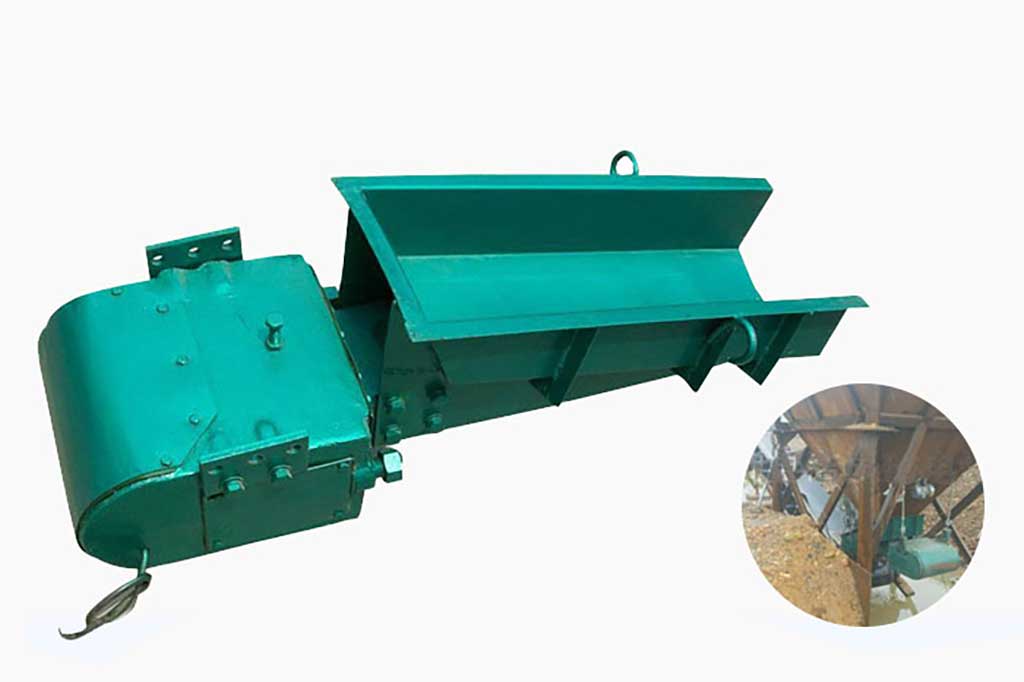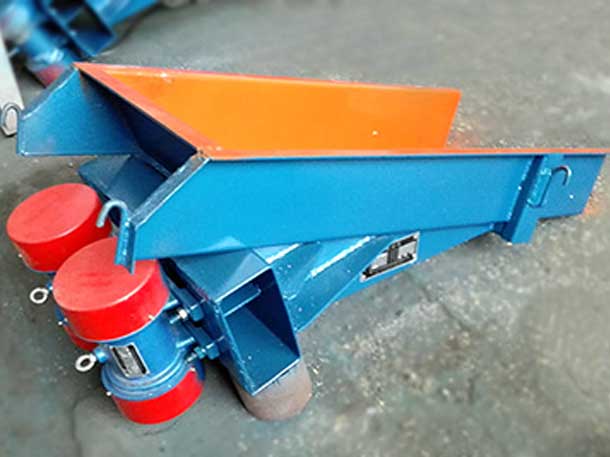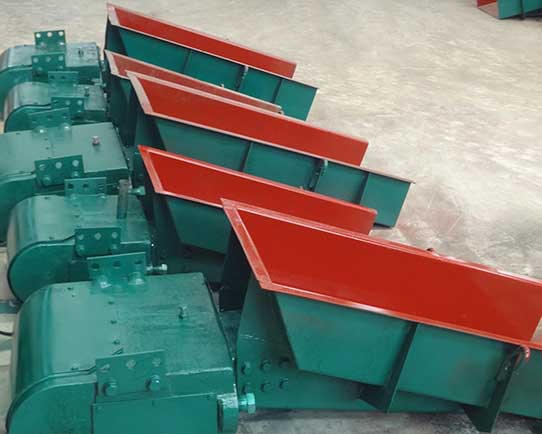Electromagnetic vibrating feeders and motor vibrating feeders are two common vibrating feeders, both of which realize material conveying through vibration. The following will introduce their basic knowledge, advantages, disadvantages, and applications respectively.
Electromagnetic vibrating feeder

An electromagnetic vibrating feeder is a feeding equipment that uses electromagnetic force to achieve vibration. It consists of an electromagnetic vibrator, hopper, conveying pipeline and controller, etc. The electromagnetic vibrator vibrates the vibrator through electromagnetic force so that the material in the hopper is vibrated and moves towards the conveying pipeline. The controller can control the vibration frequency and vibration amplitude of the electromagnetic vibrator to achieve precise control of materials.
Advantage
The electromagnetic vibrating feeder has the advantages of stable vibration, low noise, no lubrication, high precision, and long life. Especially when conveying viscous materials and materials that are easy to clog, the effect of an electromagnetic vibrating feeder is more obvious. In addition, the electromagnetic vibrating feeder can be adjusted according to actual needs to achieve accurate material delivery and avoid material extrusion and damage.
Shortcoming
The structure of the electromagnetic vibrating feeder is more complicated and the cost is higher. At the same time, for materials with large particle sizes and large flow rates, the conveying effect of the electromagnetic vibrating feeder is not as good as that of the motor vibrating feeder. In addition, the electromagnetic vibrator needs an external AC power supply, so it is not suitable for some occasions.
Application
Electromagnetic vibrating feeder is widely used in material conveying and batching process in the chemical industry, metallurgy, mining, building materials, and other industries. For example, in the chemical industry, electromagnetic vibrating feeders are widely used to prepare powdery raw materials, additives, and other materials.
Motor vibrating feeder

The motor vibrating feeder is a feeding equipment that uses a vibrating motor to achieve vibration. It is composed of a vibrating motor, vibrator, hopper, conveying pipe and controller, etc. The motor drives the vibrator to vibrate so that the material in the hopper is vibrated and moves towards the conveying pipeline. The controller can control the speed and vibration amplitude of the motor to achieve precise control of the material.
Advantage
The advantage of the motor vibrating feeder is that it has a simple structure, low cost, and is suitable for material transportation with large particle sizes and large flow. At the same time, the motor vibrating feeder does not need an external power supply and can be used on various occasions. In addition, the vibration frequency and vibration amplitude of the engine vibrating feeder can be realized by adjusting the motor speed and the design parameters of the vibrator.
Shortcoming
Compared with the electromagnetic vibrating feeder, the vibration of the motor vibrating feeder is relatively unstable and the noise is relatively large. At the same time, the motor vibrating feeder needs regular lubrication to ensure the normal operation of the equipment.
Application
Motor vibrating feeder is widely used in material conveying and batching process in construction, metallurgy, mining, chemical industry, and other industries. For example, in the construction industry, motor vibrating feeders are widely used to convey materials such as concrete, cement, and mortar.
Electromagnetic Vibrating Feeder vs Motor Vibrating Feeder
The two vibrating feeders have their advantages and disadvantages, and the specific selection should be considered according to comprehensive factors such as material characteristics, conveying requirements, use environment, and economic benefits. For the occasion of conveying materials that are easy to stick and clog, the electromagnetic vibrating feeder should be preferred. For the material conveying with large particle size and large flow, the motor vibrating feeder should be preferred.
In addition to the above-mentioned industrial applications, vibrating feeders are also widely used in material conveying and batching processes in food, medicine, plastics, and other fields. In the food industry, vibrating feeders are widely used to transport feed, powder, granules, and other materials; in the pharmaceutical industry, vibrating feeders are widely used to transport raw materials, intermediates, and other materials; in the plastics industry, vibration Feeders are widely used to convey materials such as granules and powders.
Final Words
The vibrating feeder is a very important material conveying equipment, which has a wide range of applications and has great market demand. With the continuous development of science and technology, the technology of vibrating feeders is also continuously improved, its performance will be superior, and its application range will be wider.
